All-Season Tires Vs Winter Tires
See if all-season tires or winter tires are right for you.
We all know that there are differences between all-season tires and winter tires that make one perform “ok” in most conditions, and that make the other offer exceptional performance in cold, snow and ice, but what are they? That’s a more complicated question, but don’t worry, we’re here to tell you what the difference is between all-season tires and snow tires or winter tires.
The basics of both types of tires are the same. The dimensions, how they’re sized, that they’re black and hold air, all of that stays the same, but there are some visible differences that let you know you’re looking at a winter tire as well as some invisible ones.
The most obvious visual difference is the three-peak mountain snowflake on the sidewall of the tire. That symbol (also called 3PMSF) is part of a standard created by the U.S. Tire Manufacturers Association and the Rubber Association of Canada, and it identifies car and light truck tires that have traction that meets or exceeds a certain reference score on an official test. Tl;dr, it means that the tires have at least the minimum level that is required to be called a winter tire.
Continental PureContact
While you're looking at the tire, take a look at the tread and more differences appear. This Continental PureContact is a highly rated all-season touring tire, so its tread is a good example of what all-season tires look like. See how the edges of its tread blocks are smooth and relatively straight? That helps the tire channel water away from the tread in the rain. Now see how there are some fine lines on the tread, but they are also quite straight? Big and chunky tread blocks add better dry cornering grip and help to lower road noise.
Bridgestone Blizzak WS90
Now, look at this Bridgestone Blizzak WS90 tire's tread. The tread block's edges are jagged with lots of tiny zigzags. More edges mean more grip on snow and ice, so more zigzags is better. For the same reason, the tread blocks are full of even more zigzag cuts, called sipes, that cut up the larger tread block into smaller segments. More sipes means even more edges, and even more ice and snow grip. The trade off is that these tread blocks move around on dry pavement, especially when the temperature climbs. Tread blocks moving around leads to more noise, slightly lowered fuel economy, and, especially when it's warm, mean soft and mushy handling and faster tire wear.
Toyo Observe GSi6
Another thing you'll notice about some of the best winter tires is that even though they are marked with the same tread width as an all-season tire, the actual tread is much narrower. The shoulder of the tire, as it transitions from sidewall to tread, is less rounded and more angled, and the tire isn't able to roll onto the shoulder as easily as an all-season. The reason for this is that a narrower tread is able to cut into the snow and slush better than a wider tire that can "float" on top. It was once common to fit narrower tires in the winter, but now some tire companies are doing that work for you, taking out the guesswork of getting the right "minus size" tire.
The compound of a winter tire is also different. The compound is what makes up the rubber of the tire and gives it the mechanical grip needed to stick to the pavement. Tire companies call a winter compound "softer," but there's more to it than just softness. After all, a racing slick tire is quite soft but will crack and burst if you leave it on a car when the temperature drops below freezing.
In this case, softer means that the tire stays flexible when the mercury plummets. Even at -40, the tire's rubber can flex at a microscopic level to let it conform to the surface of the road (or the ice and snow on it) and give it the mechanical grip you need. Run a bald winter tire on a warm racetrack and you'll quickly learn that it's a completely different rubber compound than you'd find on a race car. Winter tires despise heat. All-season tires are designed to be "harder" at normal summer temperatures. With more friction from the road surface, that hardness helps the tires last longer.
Tire makers also add special ingredients to help their winter tires grip better. One of the latest is the use of silica as a filler material in place of the traditional carbon black. Silica makes tires more flexible at lower temperatures. It also leads to less wear and improved fuel economy.
Another compound addition is Toyo Tire's use of walnut shells. The shells are crushed up and added to the rubber used for the tire tread of tires like the Toyo Observe GSi6. The crushed shells act like tiny spikes and dig into ice or compacted snow as you drive. In short, they work like microscopic tire studs, and as they wear with the rubber, the edges are constantly being replaced.
Studdable Tires
The last big difference is when it comes to studs. Tire studs are small (1/4-1/2-inch long) metal spikes that are inserted into the tire. They poke out of the tread and are meant to dig into ice and packed snow. They can make even the best winter tires a little bit better on solid or wet ice. Studdable winter tires have small holes in the tread of the tire, placed at strategic locations, that are designed to let a tire shop install hundreds of the small metal studs, for those facing the worst winter conditions. All-season tires won't offer stud holes, so can't be fitted with tire studs.
We are committed to finding, researching, and recommending the best products. We earn commissions from purchases you make using the retail links in our product reviews. Learn more about how this works.
Feature Photo by frank_peters/Shutterstock.com
Evan moved from engineering to automotive journalism 10 years ago (it turns out cars are more interesting than fibreglass pipes), but has been following the auto industry for his entire life. Evan is an award-winning automotive writer and photographer and is the current President of the Automobile Journalists Association of Canada. You'll find him behind his keyboard, behind the wheel, or complaining that tiny sports cars are too small for his XXXL frame.
More by Evan Williams



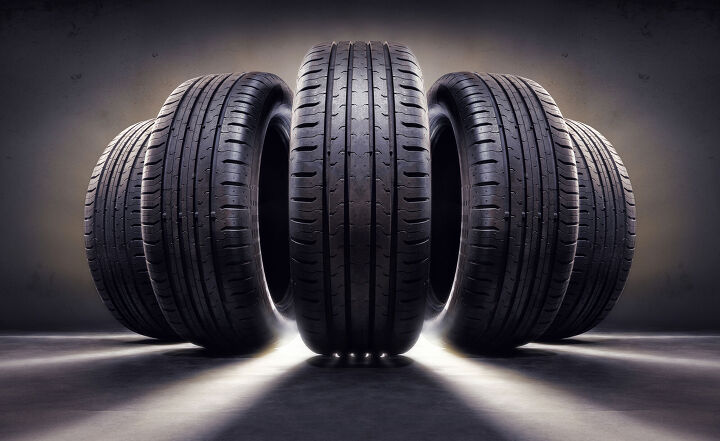

















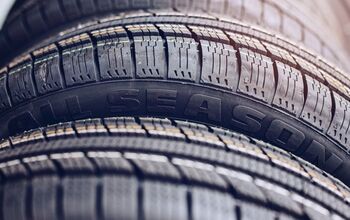

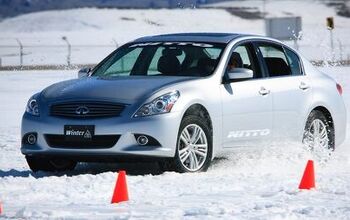



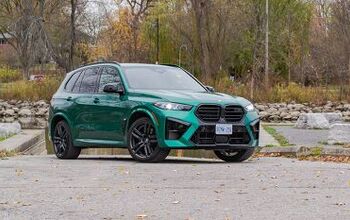




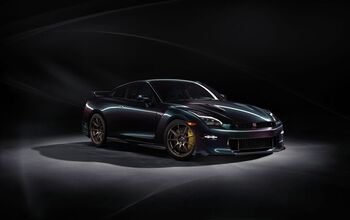



Comments
Join the conversation